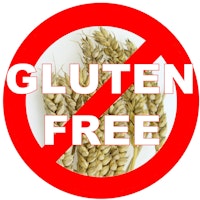What Do Gluten-Free Regulations Mean for Food Companies?
While gluten-free remains a voluntary claim for food manufacturers, regulatory agencies like the FDA and Canadian Food Inspection Agency have specific requirements which detail what that claim means. Under both aforementioned governing bodies, any foods declared gluten-free must contain less than 20 parts per million (ppm) of gluten. Here, we take a closer look at what these and other gluten-free regulations mean for the food industry.
Gluten-Free Recalls
Allergens continue to be the number one cause for recalls, and effective allergen management is an ongoing challenge in food manufacturing environments due to the many different types of food processes that take place. While gluten itself is limited in terms of the number of recalls it has caused, when combined with wheat (which also is encompassed by gluten-free recalls), it accounts for roughly 18% of recalls in Canada, with similar figures throughout the U.S. and other developed nations.
To ensure integrity and compliance with gluten-free specifications, a gluten-free management program must be developed and implemented throughout the supply chain. Effective management of a gluten-free program should encompass Hazard Analysis and Critical Control Points (HACCP)-based methodologies. At the most basic level, this includes the identification, prevention and control, and declaration of gluten.
Considerations for Mitigation
Whether moving towards becoming a completely gluten-free facility or preparing for gluten-free labeling on a specific product or product line, food companies can take steps to mitigate the risks associated with gluten in their facilities.
Re-examine relationships with suppliers: One preliminary step food companies can take is to reassess vendor management. Consider supplier history and performance in the areas of audits, quality, safety, and testing to determine whether continuing to do business with a particular supplier will help or hinder successful gluten-free management.
Become knowledgeable on products: To determine a facility’s risk factors, it is necessary to first develop an in-depth understanding of where gluten may be found in its products or ingredients.
Gluten proteins are commonly found in bread, cereal, pasta, cakes, and many other foods containing barley, rye, wheat, kamut, spelt, or triticale. Gluten is also defined as any modified gluten protein or protein fraction derived from any of the aforementioned grains.
Obtain certification: Completing a gluten-free certification program can help companies develop a clear and effective gluten management program and reduce risks. Certification from a reputable gluten-free program can also aid in building trust and loyalty among customers seeking gluten-free products, and it can also help products go to market effectively by supporting brand credibility.
While this is by no means a comprehensive list of actions food companies can take to support effective gluten-free practices, it does provide a solid foundation on which a robust gluten management program can be built.


